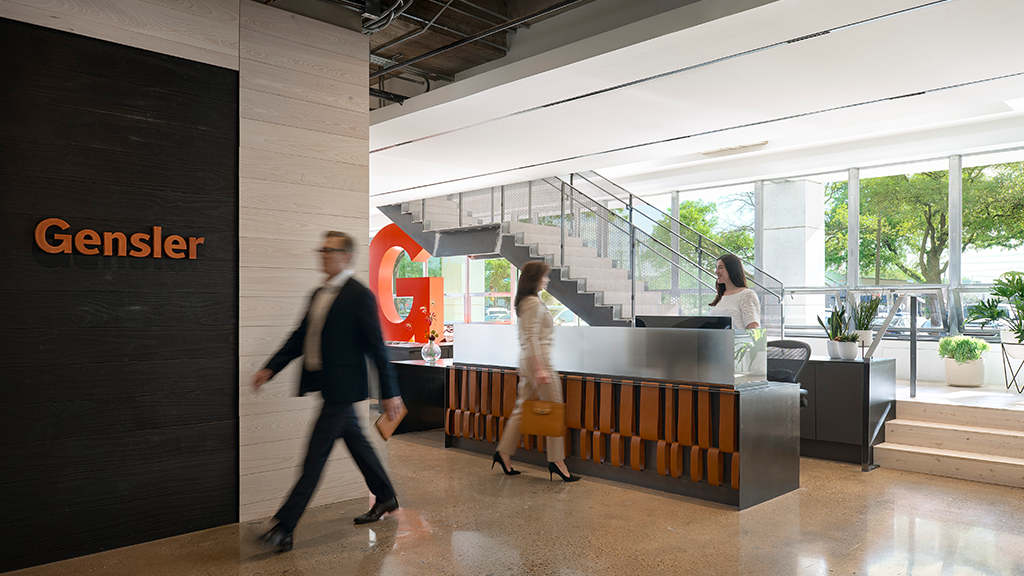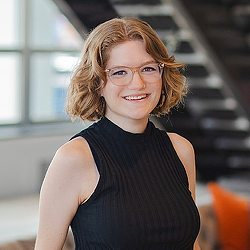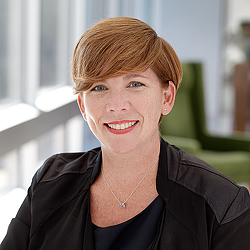The Studio Lab: An Experimental Approach to Transform the Workplace
September 20, 2023 | By Jeni Martin and Kelly Moore
Across industries, organizations are rethinking ways to engage their employees and create thriving workplaces. With new, evolved work models and expectations, workplace trends have emerged that reclaim experience and embrace piloting and experimentation. As key stakeholders, it is important for companies to engage employees in the decision-making journey so that together they can curate experiences and transform the workplace.
Through discovery and engagement with users, three of our Dallas design studios came up with an experimental approach to explore and evaluate new working environments and designs.
Discovery + Origin of The Studio Lab
To understand the overall effectiveness and experience of the current studio environment, the studios used the Gensler Workplace Performance Index (WPIx) survey tool to gather colleagues’ input to understand work styles, behaviors, and expectations for a supportive, collaborative work environment. Feedback revealed six key insights and opportunities around space, technology, and culture:
- Personal productivity and decision-making speed are being negatively impacted by the current workplace model.
- Employees use the office to connect with their colleagues for both work and socialization.
- There are a variety of collaboration needs among disciplines and roles, happening at varying frequency.
- Existing focus spaces are too few, and currently not optimal for virtual video connections.
- Current open collaboration spaces do not actually meet functional needs for collaboration.
- Enclosed meeting rooms are effective, but the technology lags behind.
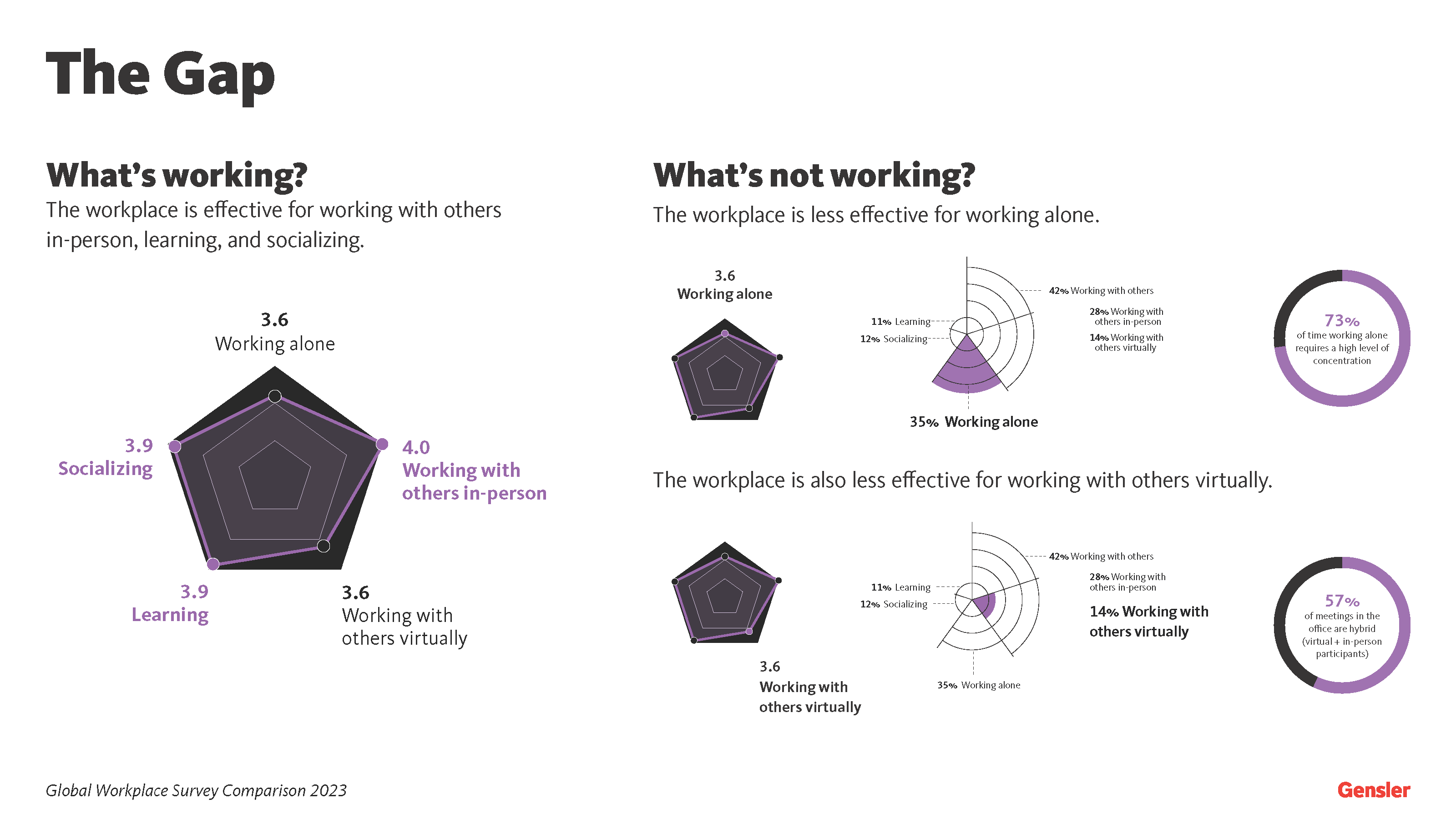
These themes surfaced in a series of workshops with studio leaders and users to discuss how we might reimagine and co-create a new studio experience. Several solutions were identified, and an opportunity was recognized. Rather than moving forward with a fixed, final solution, at a large scale and robust investment, the team decided to propose a series of experiments around spatial and behavioral interventions. These experiments would be evaluated over time, through feedback and iteration, ultimately understanding what worked and what failed. This is where the Studio Lab was born.
The Studio Lab Concept
The Studio Lab concept is rooted in providing an environment that empowers users to move throughout a space, identifying what setting works on any given day. The concept provides a variety of zones and space types to enhance specific kinds of activity, encouraging users to use different spaces throughout their day, and choose an environment that works best for what needs to be accomplished.
To support the varying work modes of users, the studio was reorganized into task-oriented environments, made up of Active and Quiet Zones. In the Active Zone, users can work either independently or alongside other team members. The Quiet Zone is divided into “Focus Call,” to support more effective virtual meetings and desk work, and “Focus Only,” for a quiet place to do heads down work (similar to a library). Supported with a dynamic seating model, workstations and meeting rooms are reservable, while touchdowns are drop-ins and do not require a reservation.
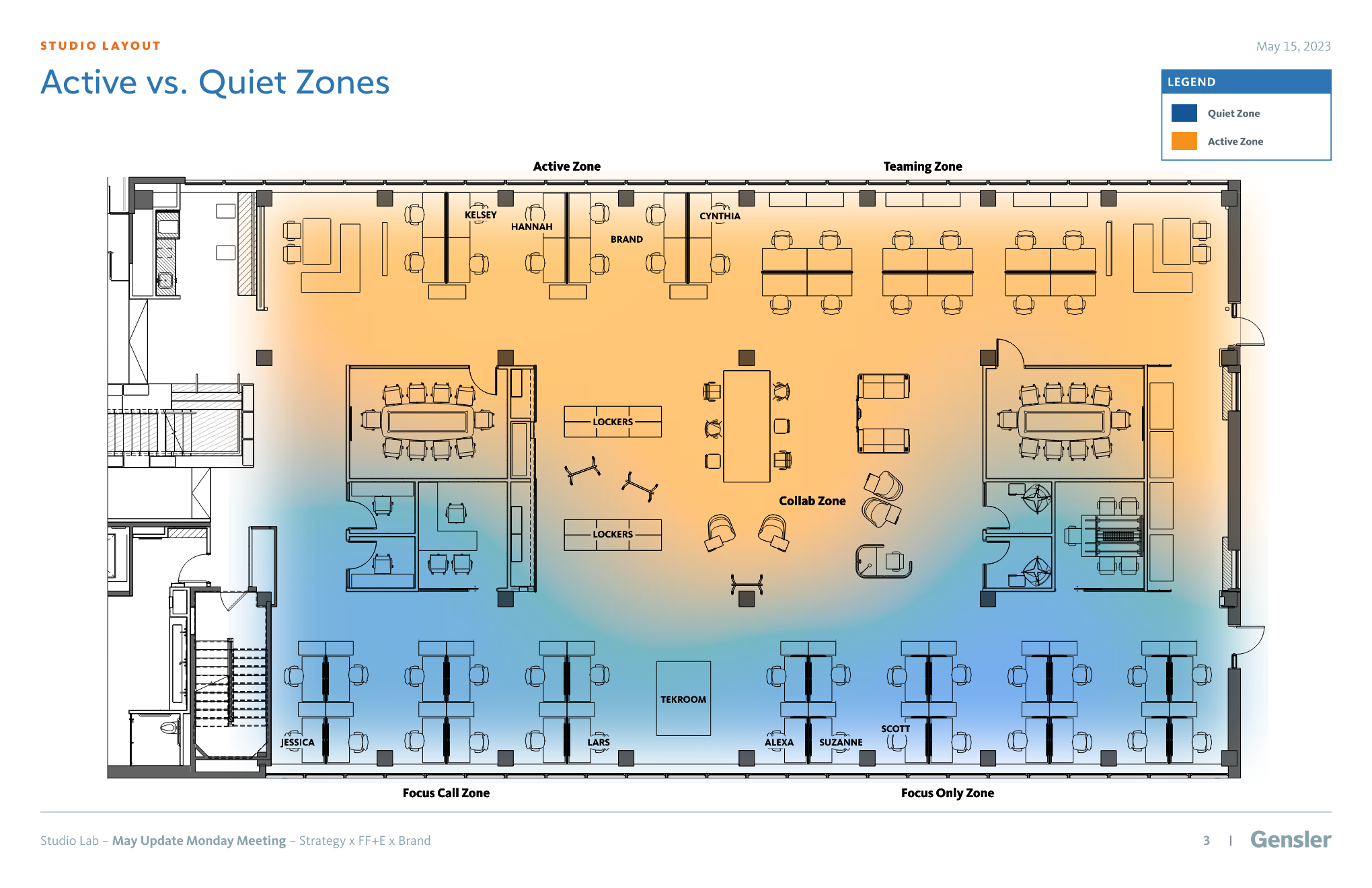
Individuals and teams choreograph their days based on what settings will best support them. For instance, a day filled with back-to-back calls might mean reserving a workstation all day in the “Focus Call” area. A day that requires concepting with a team might mean reserving a group of workstations in the Active Zone and touching down at the open collaboration spaces. If a period of uninterrupted focus is needed to complete a task or meet a deadline, users can pop into a focus room or move their workstation reservation to the “Focus Only” area.
Realizing this is a new way to organize the studio, and there would need to be a shift in behaviors, branded messaging was placed around The Studio Lab, offering tips, reminders, and inspiration for interacting within the space. To gather insight on what was working, and not working, from a user's perspective, QR codes were available for users to offer input on the different settings and environments. Feedback continues to be anecdotally collected to drive adjustments and decisions within the studio in real time.
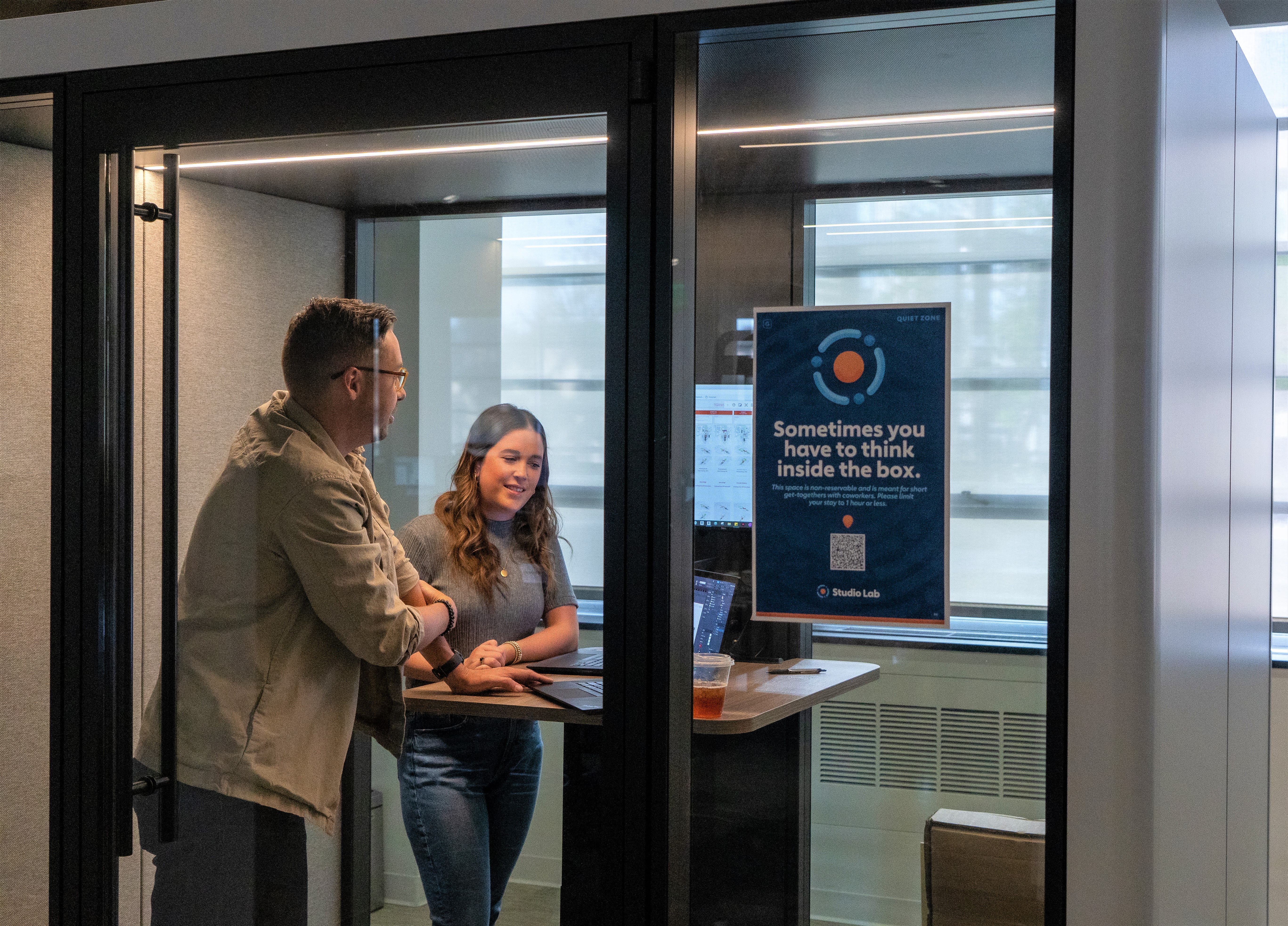
Our Learnings: The Good and Room to Improve
Following a few months of testing, we have been able to gain insights.
The Good: We have seen an increase in colleague cross-connections with dynamic seating in the Active Zone. There is also an increase in usage of the touchdown areas for those that may be in the office for a brief time or moving through several meetings throughout the day, allowing reservable desks to be available to those that may spending their entire workday in the studio.
Room to Improve: In areas that are meant to be quiet, we have learned it is helpful to have signage or features that reinforce the ideal behavior. We have also learned that a completely open, mobile environment does not work for everyone. Some need more consistency and separation in their day-to-day for their well-being. Others require a special setup for equipment at their workstation.
Learning through experimentation has become a new normal for defining the future work experience. Pilots and prototypes enable teams to test ideas and pivot before implementing at a larger scale while actively including users, so they are part of strategic planning and co-creating the future.
At Gensler Dallas, the insights gathered firsthand in the Studio Lab have allowed our teams to better understand their clients’ perspectives. With this mindset and experience, they’ll be able to apply the key takeaways and methodology to external projects.
For media inquiries, email .
